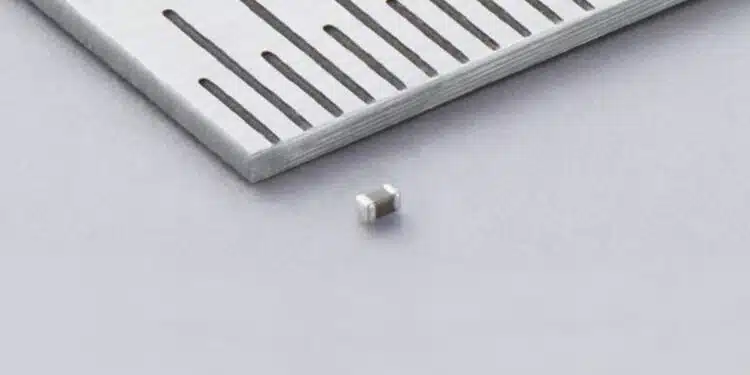Murata Manufacturing Co., Ltd. extends its lineup of PTC thermistors for overheat sensing in the 0603M size (0.6 x 0.3 x 0.3 mm) for mobile device and vehicle on-board applications, adding products that sense 105°C and 115°C to the nominal resistance 1 kΩ series.
Commercial production of the Products will start in October.
As smartphones and other mobile devices acquire advanced functionality while also becoming more compact, the number of implemented electronic components are increasing. In particular, 5G’s significantly faster communication speed brings about a massive increase in the amount of information that needs to be processed in the unit time of individual components.
This creates a larger load on components and heat buildup, leading to an increased demand for overheat sensing products. For vehicle on-board applications that comply with AEC-Q200, newer LED lights have smaller sockets that require smaller components, including overheat sensing devices.
In response to this demand, Murata applied the improved ceramic material composition and firing technique to develop the 0603M size (0.6 x 0.3 x 0.3 mm) model, which is the world’s smallest PTC thermistor among those with 1 kΩ nominal resistance. Compared to the existing PRF15 series model (1005M size), this new model has approximately 80% smaller volume and 70% less implementation footprint. Additionally, this is the first Pb-free model among Murata’s PRF series that is completely made of non-lead materials, contributing to reducing environmental burden.
Murata will continue to extend its product lineup in temperature sensing devices while contributing to high-density implementation and smaller footprint in response to market needs.
Features
- Murata’s 0603M size is the smallest size in the world among 1 kΩ nominal resistance models for mobile devices. This contributes to high-density implementation and saving space on the board.
- Smaller volume of the PTC thermistor enables fast response.
- Pb-free PTC thermistor, using no lead materials
- Non-contact design generates no noise when turned on or off.
- No need for complex circuit configuration, which contributes to a reduced number of components
- Repeatedly usable as the thermistor returns to its original resistance automatically once the normal temperature is recovered after detecting heat buildup.
- 1 kΩ resistance at room temperature (25°C), 10 kΩ at sensing temperatures 105°C and 115°C































